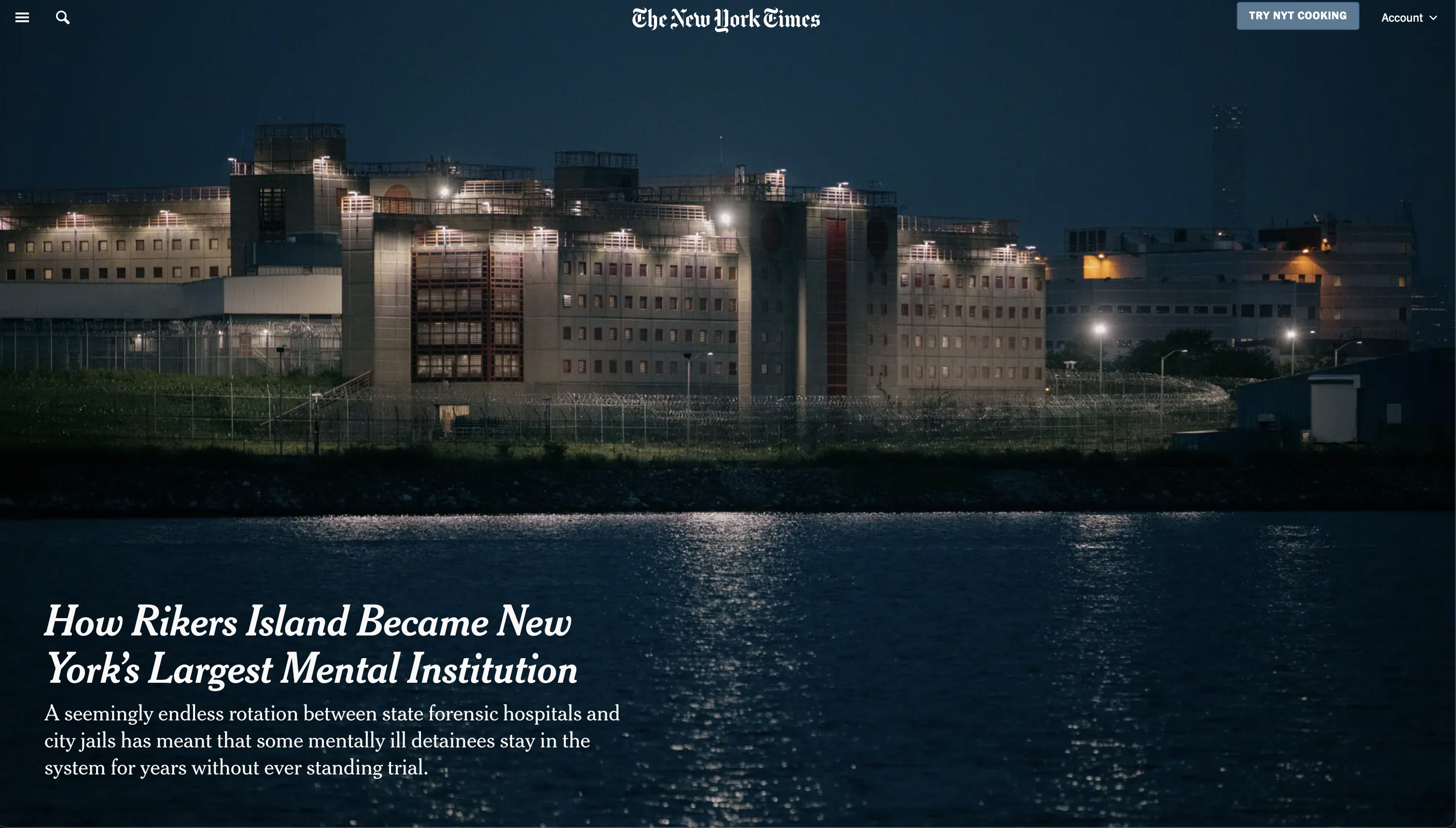Media
for The New York Times: How Rikers Island Became New York’s Largest Mental Institution
josé a. alvarado jr.
Jan 10, 2024
Jailed on an attempted murder charge, Mr. Dolo, then 38, soon was seated in front of a court evaluator for a review of his competency to stand trial. Mr. Dolo smelled of urine, the evaluator noted, had described a history of psychiatric hospitalizations and did not seem to understand the gravity of what he was accused of doing.
The evaluator marked him down as unfit, citing schizophrenia, and a judge ordered Mr. Dolo committed to a state forensic psychiatric hospital — a secure facility for incarcerated people — to be restored to mental competency. He spent nearly two years there before he was shuttled to a public hospital in Manhattan, and then to the city jails on Rikers Island, and then to the forensic hospital again.
Now, eight years later, having never been convicted of a crime in the subway shoving, he is back on Rikers Island, where guards once found him sitting in his own excrement and refusing to eat or leave his cell.
Mr. Dolo’s case, which has not been previously reported, illustrates one reason Rikers Island has become a warehouse for thousands of people with psychiatric problems: Many detainees with severe mental illness have moved back and forth between the jails and state forensic psychiatric facilities for months or even years before standing trial. Some have spent more time in this cycle than they might have served in prison had they been convicted.
Records show that more than half the people in city custody — some 3,000 men and women — have been diagnosed with a mental illness, and, on any given day, hundreds of them are awaiting evaluations or in line for beds at state forensic psychiatric hospitals, with scores more being treated at those facilities.
The competency evaluations are meant to ensure that people understand the charges against them and can assist in their own defense. The process of restoring competency is supposed to last no longer than a year. But, thanks to a limited number of beds in state forensic psychiatric hospitals, the grinding machinery of the state courts and the inability of city officials to resolve a long-simmering crisis on Rikers Island, the restoration process for some detainees has dragged on for three years or longer, records and interviews show.
One 66-year-old man awaiting trial on an attempted murder charge, Bernard Derr, has cycled between Rikers and state forensic psychiatric hospitals for 15 years.
Photographed for The New York Times, with words by Jan Ransom and Amy Julia Harris.
 How Rikers Island Became New York’s Largest Mental Institution
How Rikers Island Became New York’s Largest Mental InstitutionA seemingly endless rotation between state forensic hospitals and city jails has meant that some mentally ill detainees stay in the system for years without ever standing trial.
Nytimes.com


